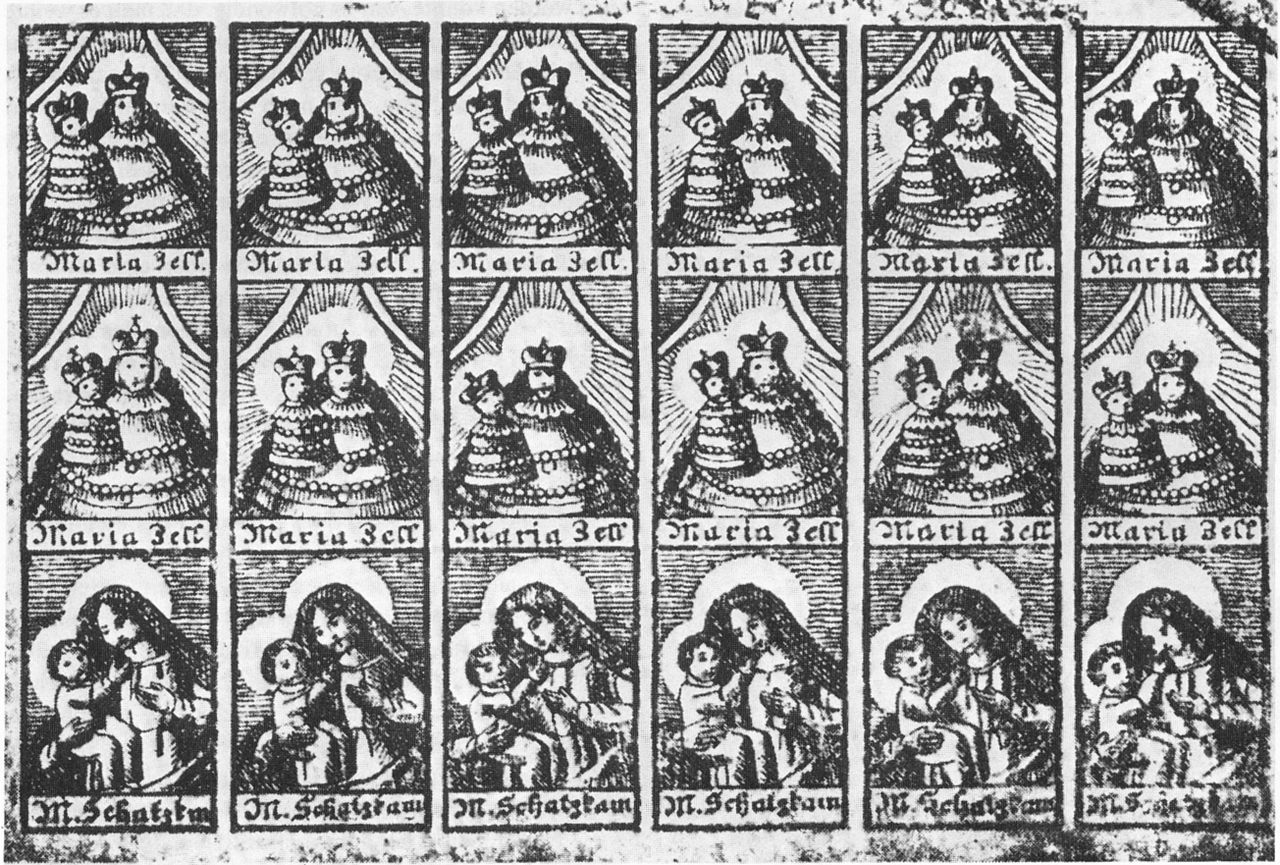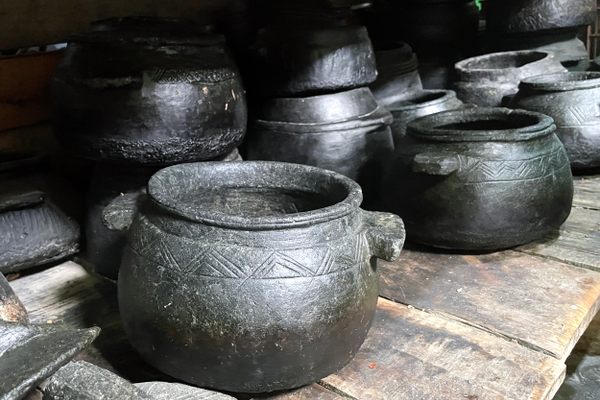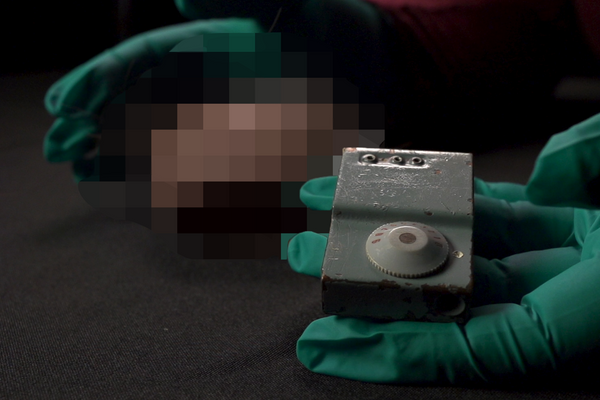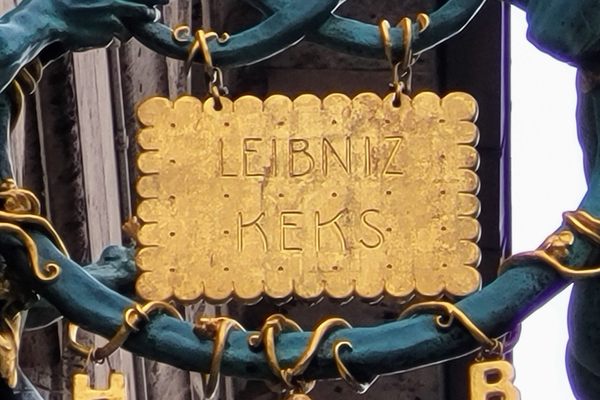These Tiny Baroque Prints Once Served as Edible Prayers
The sacred scraps were meant to be ingested.
We have very few remaining examples of the peculiar genre of Baroque-era prints known as Schluckbildchen. That’s because most of them have been eaten.
Looking like sheets of postage stamps, with repeating rows of tiny pictures, these prints were made to be sliced apart and devoured, piece by piece. That’s not to say that they were edible, exactly: The few remaining examples seem to have been printed with normal ink on normal (if coarse) paper. But then again, they weren’t meant to be delicious. Schluckbildchen, or “swallowing pictures” in German, were kind of like religion-powered pills: The tiny etchings, often depicting the Virgin Mary, Christ on the Cross, or saints, were intended to enter your body and fortify it from within.

By the 1600s, and possibly earlier, you could pick up Schluckbildchen at pilgrimage sites, along with a dizzying array of other merchandise: rosaries, vials of holy water, shiny lead badges shaped like shells, suns, and other symbols to honor saints’ shrines, and more. By the late medieval period, pilgrimage had become big business, and then, as now, visitors to a special place wanted to bring back something to remember it by. Even if you couldn’t afford to buy anything, there were still options: According to Patrick Donmoyer, historian of Pennsylvania German folk healing, a traveler might take a ribbon from their hair, tie a knot to mark out the width of the doorway, and carry that length back home with them, not just as a memento of the journey, but as a stored fragment of the holy site’s power.

But how can an image preserve a holy site’s sacredness? Consider the Dinkelsbühl Virgin: This painting was so famous for producing healing miracles that, in 1729, it was copied onto a poster with instructions that urged viewers to tear off strips, soak them in water, and drink the result as a restorative potion. It’s not exactly a Schluckbilder, but the underlying theory is the same. The copy doesn’t just mimic the original, it carries its essence.

“One of the powers of print-making is that, if you’ve got these important images, you can make so many of them,” says Suzanne Karr Schmidt, curator of rare books and manuscripts at the Newberry Library. “You can copy a painting that’s supposed to be miraculous, and it still has some of those same powers.”
Consuming the holy isn’t without precedent in religion. In the case of the Eucharist, a Communion wafer is a mass-produced object that nonetheless becomes what it represents, much like a printed image of a saint.
In fact, Schluckbildchen might have functioned as a kind of placeholder for the Eucharist. According to Karr Schmidt, before the Protestant Reformation, access to Communion was fairly restricted for the average person. If you weren’t nobility, you’d probably get to take the Host only once a year, on Easter. Deprived of the Eucharist, a commoner might have sought out another way to have intimate contact with the holy—and settled on swallowing a saint’s picture. It wouldn’t have been too far off. Karr Schmidt writes in Altered and Adorned: Using Renaissance Prints in Daily Life that Communion wafers were themselves often impressed with the image of Christ.

The idea of the edible printed charm outlived the phenomenon of Schluckbildchen, recurring in different forms. The diary of a German soldier from the Napoleonic era, for instance, provides a wonderful account of using a paper pill against fever:
A citizen of the town… asked what ailed us three…“The fever?” said he. “I can help you get rid of that.” This he really did, sitting down, writing three notes, and saying that each of us should now eat one of them. I, at least, had little faith that such a thing could help. Nevertheless, I ate mine, too; and, when the time came for me to be shaken frightfully again…the fever left not only me but also my other two comrades at the same time.
There are also 19th-century accounts of farmers using Fresszettel—little protective paper squares intended to be mixed in with cattle feed as protection against disease. Or, to treat a bite from a rabid dog, Pennsylvania German healing manuals of the same period prescribed a piece of buttered bread inscribed with a SATOR square.
These are probably just a small fraction of edible printed charms across history. “We know about these things because there are examples that have been left behind,” says Donmoyer. “But they’re part of an oral culture that does not preserve, at least not in writing or in sources we can study, some of the broader ways that people were probably taking other things into their bodies all the time.”
In other words, the complete story of Schluckbildchen will forever be a mystery, lost to the ravages of time—and digestion.
Gastro Obscura covers the world’s most wondrous food and drink.
Sign up for our regular newsletter.


























Follow us on Twitter to get the latest on the world's hidden wonders.
Like us on Facebook to get the latest on the world's hidden wonders.
Follow us on Twitter Like us on Facebook